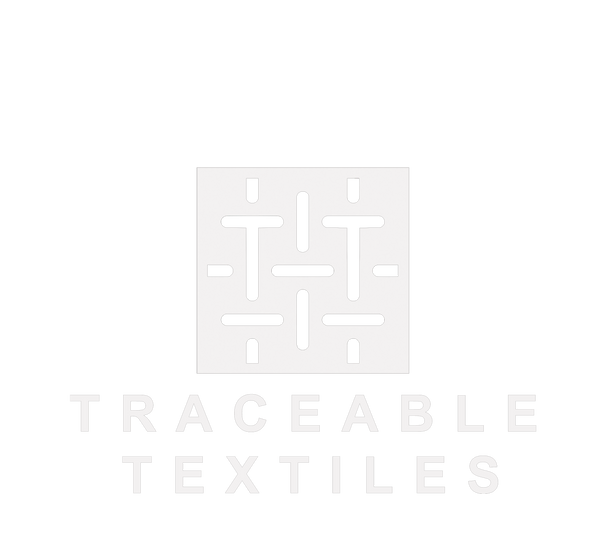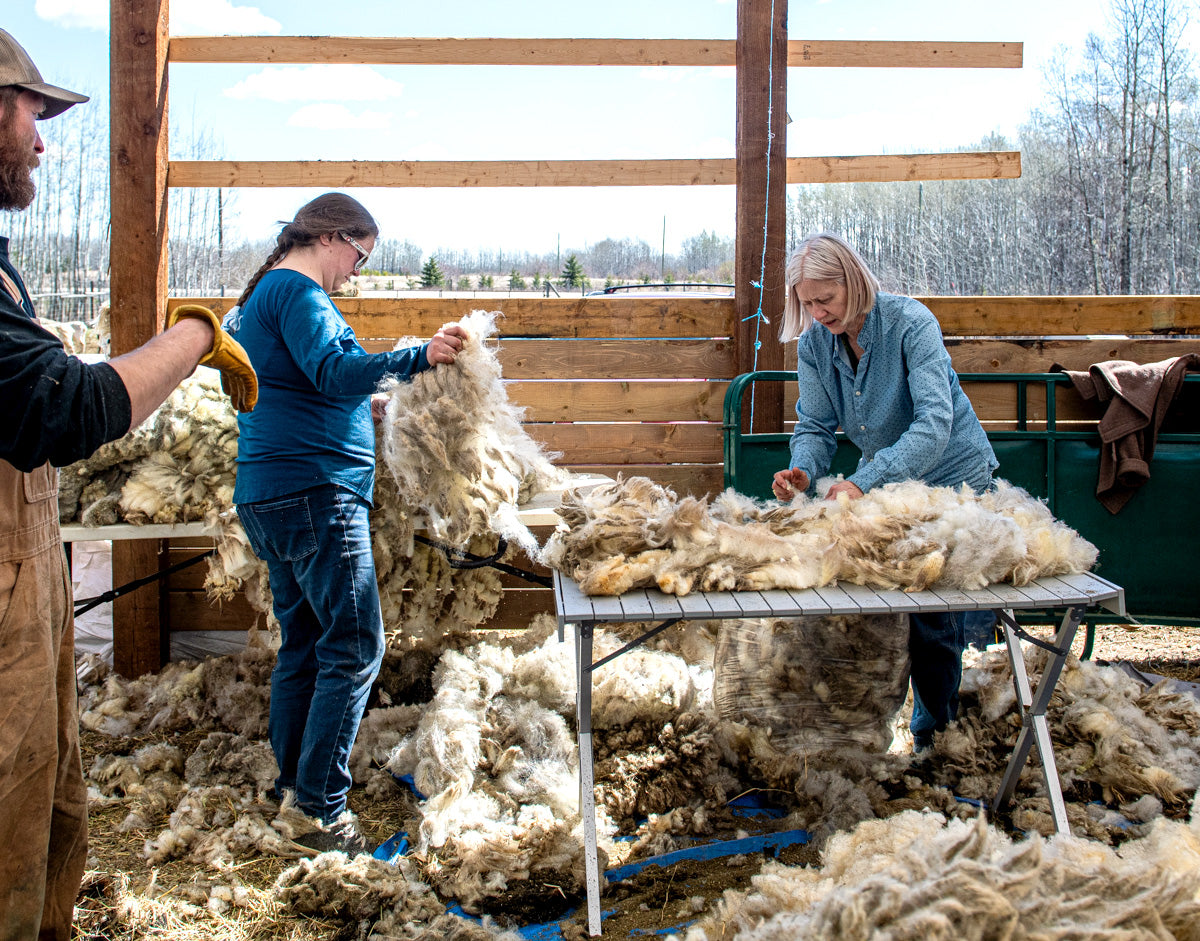We had the opportunity to spend a day at the Mitchell's Farm, a family run farm in Brazeau County. It was a pleasure spending an entire day with them as we skirted on site during their shearing day a couple of weeks ago.
We have been looking forward to get feedback from the farmers we work with, and at the end of the shearing process, we had the opportunity to chat with the Mitchells and ask them a couple of questions. Their passion for sustainable farming and commitment to quality is truly inspiring.
Their insights were not only fascinating but also aligned perfectly with our mission of creating a sustainable supply chain using locally sourced and processed wool.
Q: How did you learn or got in contact with traceable textiles?
A: It all started through in a message social media asking us if we would be interested in participating in this project. Then Traceable Textiles team came and checked out the farm, checked out the fleece and then they started buying fleeces from us.
Q: How does it make you feel to be a part of our wool sources. What does it mean to you to see your wool as a Traceable Textiles finished product like the blanket we brought today?
A: I think it's really cool. It's like a full circle moment. You raise the sheep, and essentially grow the wool. Then we kind of miss the middle part but it comes back as a beautiful blanket. It's pretty cool that it's a local and sustainable product.
Q: What did you do in the past with the sheared wool?
A: We used to send it to Wool Growers , and then some of it goes in neighbour’s gardens, we've insulated buildings with it, and made dog beds with it.
Q: What have you done differently since collaborating with Traceable Textiles, if you have done anything different or if you have changed any of your practices since working with us?
A: Yes, we definitely try and keep our wool a lot cleaner because then we know it's a lot more user -friendly. We started corn grazing last year and that keeps the wool a lot cleaner as well, so we'll definitely continue that and I know we're talking with Shannon about other practices we can do to keep them clean.
We have been talking about possibly blanketing some of the particular sheep that they have more interest in and as far as the corn grazing we'll switch to grazing the corn towards the end of the winter so that the fleeces are cleaner and it's easier all around. As we can shear it off quicker and then you don't have to go through it all and ideally take more fleece next time.
Is there anything else you would like to share ?
A:I think seeing the end product, and knowing where it came from by having raised those sheep from birth, to eat their meat and to have something produced from the farm from scratch is really cool. It gives everything a little more value. And definitely on the wool side of things opens up more opportunities that we never really thought of before we were contacted by Traceable Textiles. So actually see an end project like these blankets kind of motivates you to critique the way you're doing things and improve if we can, because it's a very beautiful thing.
The Mitchells had a big task ahead of them that day: shearing 150 sheep and 2 rams. Let me tell you, these rams were so large that they had to be brought to the shearing spot in giant sleds attached to a quad. Watching them handle the sheep and ram so efficiently was quite the spectacle.
The shearing process was impressively smooth, a testament to the Mitchell's farm team, the shearer's expertise and care. Each sheep was handled with great attention, ensuring that the shearing was done efficiently and humanely. The shearers moved with practiced ease, quickly transforming fluffy sheep into sleek, freshly-shorn animals.
One of the highlights of the day was sharing lunch with everyone working that day. We were fed delicious home made chilli with moose, tomato soup with fresh buns and veggies.
Skirting on-site during shearing day makes our job much easier and significantly beneficial for the quality of the wool we will take and use. As the fleece comes off the sheep, we can collect it immediately, which helps in avoiding a lot of dirt and debris from getting into the wool. This practice not only maintains the quality of the fleece but also speeds up the processing time later on.
Looking Ahead
Our visit to the Mitchell Farm was not just a productive day of shearing and skirting; it was a reminder of why we do what we do. The dedication and hard work of farmers like the Mitchells are the backbone of our efforts to promote local craftsmanship and sustainable living.
We hope you enjoyed this glimpse into our day at the Mitchell Farm. If you’re as inspired as we are, make sure to subscribe to our newsletters for more stories and updates from the field and our looms.







